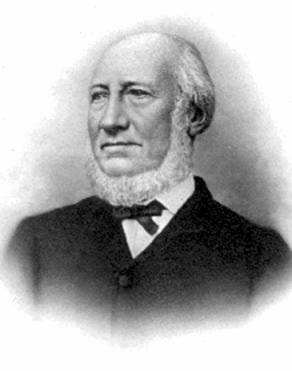Staines’s death while on an errand of protest to London so outraged private citizens that, this time, no fewer than 70 signed a new petition against Cameron’s judicial appointment.
Don’t bother looking for Nanaimo’s Cameron Island on a map. It’s still there but an island no more, having been all but swallowed by encroaching development and blacktop.
Cameron Island, as it originally was before Commercial Inlet’s reclamation, is named for a man who, if you believe his detractors, probably takes the prize as B.C.’s most blatant case of nepotism.
Born in Scotland in 1804, David Cameron began his career as a cloth merchant in Perth before emigrating to Demerara (British Guyana) to engage in sugar planting. There he married Cecelia Douglas, a sister of James Douglas, Chief Factor of the Hudson’s Bay Co. at Fort Victoria, Vancouver Island.
In July 1853 he showed up in Nanaimo, having been engaged by Douglas (who, by this time, was governor of the Crown colony of Vancouver Island) as a clerk for the HBCo.’s coal mines. In less than five months, again courtesy of brother-in-law James, he exchanged his blackened miner’s clothes (figuratively speaking) for the black silk gown of a judge. His salary, 100 pounds sterling per annum, was to come from a levy on liquor sales.
Although there were as yet no lawyers in the young colony, Cameron’s appointment was a bitter pill for Douglas’s political opponents who were led by newspaper editor Amor de Cosmos. He was related by marriage and he had no professional legal experience; hence their accusations of a “Family-Company Compact.”
Douglas stoutly defended his appointment. Although he was sure that Cameron “has…his faults like other men…I am confident of his firmness and integrity, and fully convinced that he will not wilfully commit an act of injustice.”
Douglas also shrugged off a third criticism, that of Cameron’s former association with the fur trading company which yet held sway over Vancouver Island. Weren’t most of the colony’s few citizens — including his political enemies — former HBCo. employees? “This is…an unavoidable evil,” he replied, “as there are no [other] qualified persons in the Colony…”
But his opponents would have none of it. They formed a committee and petitioned Her Majesty, Queen Victoria, via a memorial to the Duke of Newcastle, the colonial secretary, protesting Cameron’s appointment. The feisty Rev. R.J. Staines, fired by Douglas as a school teacher, volunteered to deliver the petition to London.
When he missed the sailing of a ship which would take him to San Francisco, he re-booked aboard the Duchess of Lorenzo. Caught in a storm off Cape Flattery, the lumber carrier became waterlogged and rolled on her beam ends. Staines, caught below decks, managed to cut himself free and cling to the rigging until overcome by exposure. A passing vessel picked up a single survivor who also died after describing the ship’s final hours.
Staines’s death while on an errand of protest to London so outraged private citizens that, this time, no fewer than 70 signed a new petition to the Duke of Newcastle against Cameron’s judicial appointment. They charged that he was unfit for the office because of his lack of legal experience, and that he’d shown himself to be less than partial when serving as a justice of the peace.
This time their memorial made it safely to Downing Street. Asked to answer their charges Douglas did so with vigour and backed it up with a counter-petition bearing 54 signatures” — all freeholders in the colony except two”. Almost all of them were or had been HBCo. employees but the colonial office upheld Cameron’s posting as Chief Justice of the Supreme Court of Civil Justice of Vancouver Island in 1856.
He served in this capacity, adequately if not exceptionally, until the separate colonies of Vancouver Island and British Columbia were joined in 1871. Then, in the words of a leading historian, “It was felt, in the more advanced condition of affairs, that judicial offices should be filled by men who had a professional training, which consideration moved him to retire.” His replacement was the legendary “Hanging” Judge Matthew Baillie Begbie.
David Cameron died May 14, 1872. Nanaimo has downgraded his name to a block-long, dead end street. But mapmaker Capt. George Richards, RN, memorialized him in 1860s with Alberni’s Cameron Lake.
www.twpaterson.com
